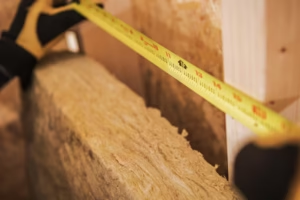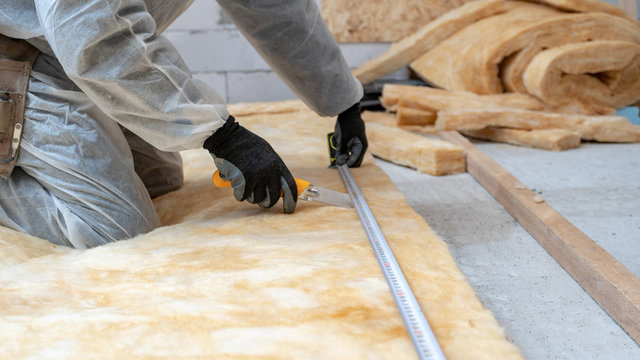When planning an insulation project, one of the first questions homeowners ask is: “How much will it cost me per square foot?” Insulation prices vary widely depending on the material you choose, labor rates in your region, and the overall scope of your project. Understanding how to properly estimate these costs can help you budget more accurately and avoid unexpected surprises during installation.
Many homeowners and contractors use Insulation Takeoff Services to get precise measurements and projections before starting, but you can also learn how to break down the costs step by step. This guide will walk you through the entire process, from the basics of square-foot cost estimation to the factors that affect pricing, and provide practical tips to ensure you’re making the best decision for your home.
Why Cost Per Square Foot Matters
The “per square foot” method is a universal standard in construction and remodeling. When you know the cost per square foot, you can:
- Compare materials easily: Spray foam vs fiberglass vs cellulose.
- Budget realistically: Understand what’s affordable within your project scope.
- Plan ahead: Estimate the total cost for your home’s walls, attic, basement, or garage.
- Avoid hidden surprises: By accounting for labor, disposal, and additional prep work.
Factors That Affect Insulation Costs Per Square Foot
No two insulation projects are identical. Prices can range significantly based on the following factors:
1. Type of Insulation Material
- Fiberglass batts/rolls: $0.40 – $1.50 per sq. ft. (affordable and widely available).
- Blown-in cellulose: $1.00 – $2.00 per sq. ft. (great for retrofits).
- Spray foam insulation: $1.50 – $4.50 per sq. ft. (expensive but energy-efficient).
- Mineral wool: $1.00 – $2.50 per sq. ft. (excellent for soundproofing and fire resistance).
- Rigid foam board: $1.50 – $5.00 per sq. ft. (common for basements and exterior walls).
2. Desired R-Value
- Higher R-values (thermal resistance) cost more.
- Example: R-13 fiberglass batt is cheaper than R-30 spray foam.
3. Labor Costs
- Labor varies by region but typically adds $0.50 – $2.00 per sq. ft. to material cost.
- Complex jobs (tight crawl spaces, older homes improvement) increase costs.
4. Accessibility of the Area
- Open walls in new construction are cheaper to insulate.
- Retrofitting finished walls or attics requires more labor and sometimes removal.
5. Home Size and Layout
- Larger areas reduce cost per sq. ft. due to bulk pricing.
- Oddly shaped or small sections may increase waste, raising overall cost.
6. Regional Pricing Differences
- Urban areas with higher wages = higher labor costs.
- Colder climates often require thicker insulation, raising material costs.
7. Additional Work Required
- Removing old insulation.
- Air sealing leaks.
- Installing vapor barriers.
- Repairing damage from mold, pests, or moisture.
Step-by-Step Guide: Estimating Insulation Costs Per Square Foot

Step 1: Measure the Area
- Measure length × height (for walls) or length × width (for attics/floors).
- Example: 20 ft × 10 ft wall = 200 sq. ft.
Step 2: Choose Your Insulation Type
- Decide based on climate, budget, and energy-efficiency goals.
- Check R-value requirements in local building codes.
Step 3: Get Material Cost Per Sq. Ft.
- Example: Fiberglass batt = $0.80 per sq. ft.
- Multiply by total area (200 sq. ft × $0.80 = $160).
Step 4: Add Labor Costs
- Assume $1.00 per sq. ft. labor = $200.
- Total = $160 (materials) + $200 (labor) = $360.
Step 5: Add Extras and Contingencies
- Waste (5-10% extra material).
- Old insulation removal (~$1.00-$2.00 per sq. ft.).
- Permits or inspection fees (varies by city).
Average Cost Per Square Foot by Insulation Type
| Insulation Type | Average Cost (Materials + Labor) | Typical R-Value Range |
| Fiberglass Batts | $0.80 – $2.50 | R-11 to R-38 |
| Blown-In Cellulose | $1.50 – $3.00 | R-13 to R-60 |
| Spray Foam (Open) | $1.50 – $3.50 | R-3.5 – R-4 per inch |
| Spray Foam (Closed) | $2.50 – $4.50 | R-6 – R-7 per inch |
| Mineral Wool | $1.00 – $2.50 | R-11 to R-38 |
| Rigid Foam Board | $2.00 – $5.00 | R-4 – R-6 per inch |
Cost Breakdown by Area of the Home
1. Attic Insulation
- Most cost-effective upgrade.
- $1.00 – $2.50 per sq. ft. depending on method.
2. Wall Insulation
- New construction: $0.90 – $2.50 per sq. ft.
- Retrofits (blown-in): $1.50 – $3.50 per sq. ft.
3. Basement Insulation
- Rigid foam or spray foam are common.
- $2.00 – $5.00 per sq. ft.
4. Crawl Spaces
- Spray foam or batt insulation.
- $1.50 – $4.00 per sq. ft.
5. Garage Insulation
- Fiberglass batts or rigid board.
- $1.00 – $3.00 per sq. ft.
Hidden Costs to Consider
- Old Insulation Removal: $1.00 – $2.00 per sq. ft.
- Air Sealing: $200 – $500 for the whole home.
- Disposal Fees: $50 – $150 depending on volume.
- Moisture Control: Vapor barriers cost $0.50 – $1.00 per sq. ft.
DIY vs Professional Cost Estimation
DIY Approach
- Measure areas and multiply by retail material cost.
- Add an estimate for labor if you’re hiring.
- Good for budgeting but less precise.
Professional Approach
- Contractors use software to calculate precise square footage.
- Include R-value requirements, waste factor, and regional codes.
- Often tied to rebates and energy-efficiency programs.
When to Use Professional Estimating Services
If your project is large or complex, professional guidance ensures accuracy. Many contractors provide Insulation Estimation that include:
- Digital measurement reports.
- Cost breakdown by material.
- Energy savings projections.
- Recommended installation methods.
This service prevents overbuying or under-insulating, saving you money long-term.
Tips to Reduce Insulation Project Costs
- Bulk Purchasing: Buy materials in bulk for lower cost per sq. ft.
- Seasonal Discounts: Schedule projects during off-peak months.
- Energy Rebates: Look for government or utility rebates on insulation upgrades.
- Combine Projects: Add air sealing or duct sealing during insulation for efficiency.
- DIY Prep Work: Clear areas and remove old insulation before contractors arrive.
FAQs About Insulation Cost Per Square Foot
Q1: What’s the cheapest insulation per square foot?
Fiberglass batts are the cheapest, starting at about $0.40 per sq. ft.
Q2: What’s the most expensive insulation?
Closed-cell spray foam can reach $4.50-$5.00 per sq. ft.
Q3: Does insulation cost more in colder climates?
Yes, because higher R-values and thicker materials are required.
Q4: How do I calculate how much insulation I need?
Measure the area in sq. ft., multiply by material cost, then add labor and extras.
Q5: Can I save money by installing insulation myself?
Yes, but mistakes can reduce efficiency. DIY is best for fiberglass batts; spray foam usually requires professionals.
Q6: Does insulation increase home value?
Yes, energy-efficient homes often sell faster and at higher prices.
Q7: How much can insulation save on energy bills?
Proper insulation can reduce heating/cooling costs by 15-30%.
Conclusion
Estimating insulation cost per square foot is the most practical way to plan your project. By breaking down material, labor, and hidden expenses, you’ll have a clear idea of total costs before starting. While fiberglass and cellulose are affordable, spray foam and rigid foam boards offer higher efficiency but come at a premium price.
For the most accurate results, homeowners should consider using Insulation Estimating to receive a detailed breakdown and professional recommendations. This ensures your project stays within budget while maximizing comfort, energy savings, and long-term value.

